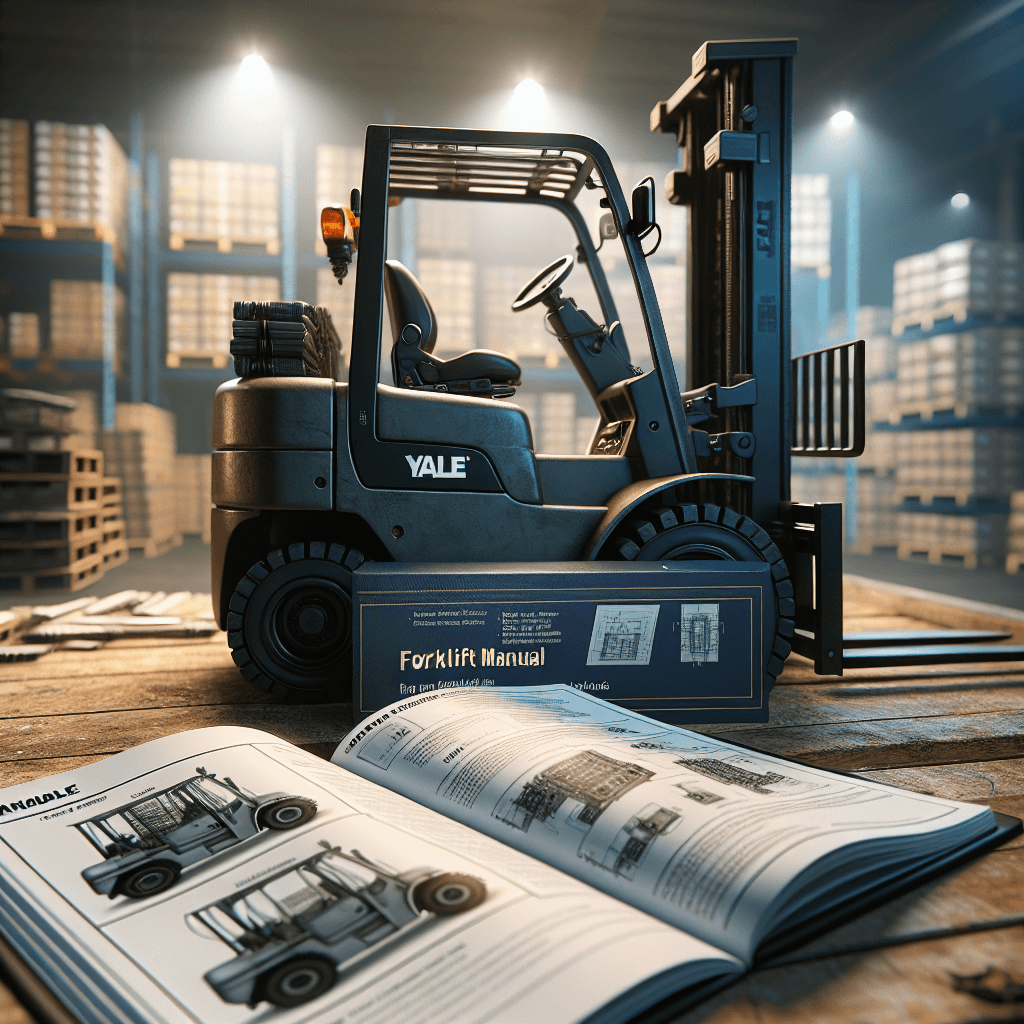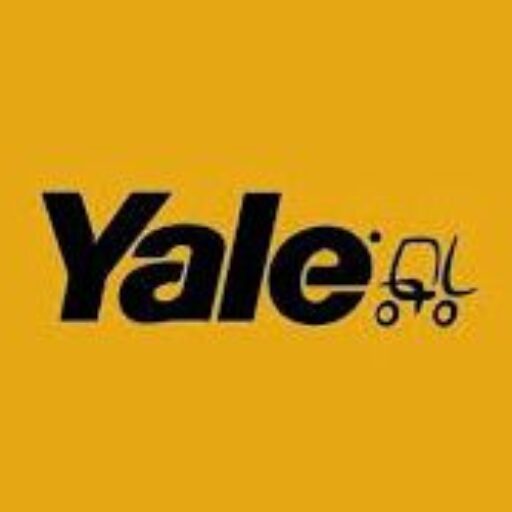Your cart is currently empty!

“Using Your Yale Forklift Manual for Immediate Repairs”
Yale forklifts are renowned for their reliability and efficiency in handling heavy loads across various industries. However, like any machinery, they require regular maintenance and occasional repairs to ensure optimal performance. One of the most valuable resources for making these repairs is the Yale Forklift manual. This comprehensive guide provides detailed instructions and diagrams to assist operators and technicians in troubleshooting and fixing issues. In this article, we will explore how to effectively utilize a Yale Forklift manual for immediate repairs, covering everything from understanding the manual basics to ensuring safety during the repair process.
Understanding Your Yale Forklift Manual Basics
The Yale Forklift manual is an essential tool for anyone responsible for the maintenance and repair of these machines. It contains a wealth of information, from operational guidelines to detailed schematics and troubleshooting tips. Familiarizing yourself with the manual’s layout is the first step. Generally, it is divided into sections that cover different aspects of the forklift, such as the engine, hydraulics, and electrical systems. Each section typically includes diagrams, part numbers, and step-by-step instructions for common repairs and maintenance tasks.
Before diving into repairs, it’s crucial to understand the symbols and terminology used throughout the manual. Yale manuals often use industry-standard symbols to indicate specific actions or warnings. For instance, a wrench symbol might denote a mechanical adjustment, while an exclamation mark could signify a safety warning. By understanding these symbols, you can navigate the manual more effectively and avoid potential mistakes during repairs.
Another important aspect of the manual is the troubleshooting section. This part of the manual provides a systematic approach to diagnosing problems. It typically includes a list of common symptoms and their possible causes, allowing you to pinpoint the issue quickly. By following the troubleshooting guide, you can save time and effort in identifying the root cause of a malfunction.
Lastly, make sure to have the correct manual version for your specific forklift model. Yale produces a wide range of forklifts, each with unique specifications. Using the wrong manual could lead to incorrect repairs or even damage to the machine. If you’re unsure which manual you need, you can check the model and serial number on your forklift or visit the official Yale website at Yale Lift Truck for guidance.
Identifying Essential Repairs with Your Manual
When it comes to identifying which repairs are essential, the Yale Forklift manual is your best ally. Start by reviewing the regular maintenance schedule outlined in the manual. This schedule will highlight the components that need frequent attention, such as filters, fluids, and brakes. By following this schedule, you can prevent minor issues from escalating into major repairs, ensuring the longevity of your forklift.
In addition to routine maintenance, the manual can help you identify more urgent repairs. Pay close attention to any unusual noises, vibrations, or performance issues you might experience during operation. The manual’s troubleshooting guide can assist in correlating these symptoms with specific mechanical problems, allowing you to address them promptly.
For more complex repairs, the manual provides detailed instructions and diagrams that can guide you through the process. Each repair section includes a list of required tools and parts, ensuring you have everything needed before starting the repair. This preparation is crucial, as having the right tools and parts on hand can significantly reduce downtime and enhance repair efficiency.
Finally, don’t overlook the importance of the manual’s safety warnings and recommendations. These sections often provide insights into potential hazards associated with specific repairs. By heeding these warnings, you can avoid accidents and ensure that repairs are conducted safely and effectively.
Step-by-Step Guide to Using the Manual Right Now
Once you’ve familiarized yourself with the manual and identified the necessary repairs, it’s time to put the manual to use. Begin by gathering all the tools and parts listed in the manual for the specific repair you are undertaking. Having everything on hand will streamline the repair process and reduce interruptions, allowing you to focus entirely on the task at hand.
Next, carefully follow the step-by-step instructions provided in the manual. These instructions are designed to be comprehensive, guiding you through each stage of the repair with precision. Pay attention to the sequence of steps, as deviating from the recommended order could lead to errors or incomplete repairs. The diagrams included in the manual can be particularly helpful in visualizing complex components and ensuring proper assembly.
During the repair, take your time to double-check each completed step against the manual’s guidelines. This practice will help you catch any mistakes early on and prevent them from affecting the overall repair. Additionally, if you encounter any difficulties or uncertainties, refer back to the troubleshooting section or consult the Yale website at Yale Lift Truck for further assistance or clarification.
Once the repair is complete, perform a thorough inspection to ensure everything is functioning correctly. Test the forklift in a controlled environment to verify that the issue has been resolved and that the machine is operating smoothly. If any problems persist, revisit the manual to double-check your work or consider seeking professional assistance if needed.
Safety Precautions for Immediate Forklift Repairs
Safety is paramount when performing repairs on any heavy machinery, and forklifts are no exception. The Yale Forklift manual not only provides detailed repair instructions but also emphasizes essential safety precautions to protect both the operator and the equipment. Before starting any repair, ensure the forklift is on a stable and level surface, and engage the parking brake to prevent any unintended movement.
Always wear appropriate personal protective equipment (PPE) as recommended in the manual. This may include gloves, safety glasses, and steel-toed boots, depending on the nature of the repair. PPE is crucial for protecting yourself from potential hazards such as sharp edges, hot surfaces, or moving parts.
Additionally, disconnect the battery or power source before working on the forklift’s electrical components. This step is vital to prevent electric shock or short circuits during the repair process. The manual will often include specific instructions for safely disconnecting and reconnecting electrical systems, so be sure to follow these guidelines closely.
Finally, never attempt a repair if you are unsure of the procedure or lack the necessary expertise. The manual is a valuable resource, but it cannot replace professional training or experience. If you have any doubts about your ability to safely and effectively complete a repair, consider consulting a certified technician or contacting Yale’s support team through their website at Yale Lift Truck for professional assistance.
Utilizing a Yale Forklift manual for immediate repairs is an effective way to maintain the performance and safety of your forklift. By understanding the manual’s basics, identifying essential repairs, and following step-by-step instructions, you can address issues promptly and efficiently. Always prioritize safety by adhering to the manual’s precautions and seeking professional help when necessary. With the right approach and resources, you can keep your Yale forklift running smoothly and minimize downtime in your operations.
